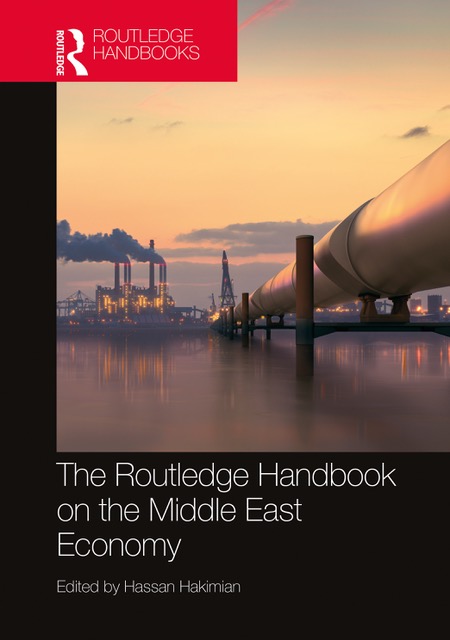In a nutshell
The ‘resource curse’ theory, originating in the 1970s, is arguably one of the more significant and lasting contributions of the region to development theory and one that originated there and travelled outwards.
One legacy of the Arab Spring was to lead to greater and more explicit recognition of the importance of political and social factors among economists.
Just as sophisticated financial models did not rescue the world from the global financial crisis, in the Middle East too, the challenge is not to lose our focus on the complex but real problems of the region.
Sir William Arthur Lewis (1915-91) is widely recognised as a towering figure and a forerunner in development economics. He was the first development economist to be awarded the Nobel Prize in Economics (jointly in 1979), and his seminal paper ‘Economic Development with Unlimited Supplies of Labour’, published in 1954, has adorned reading lists and textbooks for generations of students.
What is less well known is that in 1938, he was the first black lecturer to be appointed at the London School of Economics (LSE) and later the first ever black professor in the UK. Even more significantly, his ground-breaking appointment came with restrictions, which reflected the racial prejudices of the time (he was from the Caribbean island of St Lucia): it had to be approved by the LSE’s Court of Governors; his total teaching hours were limited; and he was only permitted to teach groups of students, which barred him from holding individual tutorials (Forbes-Taylor and Walker, 2020).
Perhaps even more obscure is the knowledge that our region – the Middle East and North Africa (MENA) – had some linkage to his seminal paper. In the spring of 1953, Lewis visited Egypt, where he delivered three lectures on industrialisation (Lewis, 1953).
According to him, the initial idea behind his two-sector model of economic development came to him in 1952 when he was ‘walking down the road in Bangkok’. But this has not deterred some to suggest that ‘in many ways, the Egyptian lectures previewed the main ideas in Lewis’s 1954 article’ (Tignor, 2006). After all, Lewis had listed Egypt along with India and Jamaica in his paper, where the ‘unlimited supply of labour’ was ‘obviously the relevant assumption’ (Lewis, 1954).
This fascinating story might be a good starting point for sketching out the contours of Middle East economics. But to seek the genesis of the field in Lewis’s work or even in this era is a long shot.
 On the contrary, in my introduction to a recently published edited volume, The Routledge Handbook on the Middle East Economy, which features contributions from more than 15 ERF research fellows, I remark that: ‘Knowledge of Middle Eastern economies as an autonomous field within economics is of relatively recent origins and has evolved in uneven ways’ (Hakimian, 2021).
On the contrary, in my introduction to a recently published edited volume, The Routledge Handbook on the Middle East Economy, which features contributions from more than 15 ERF research fellows, I remark that: ‘Knowledge of Middle Eastern economies as an autonomous field within economics is of relatively recent origins and has evolved in uneven ways’ (Hakimian, 2021).
The handbook – to date, the first one on our region’s economy – consists of 22 chapters covering a broad range of pertinent topics. It shows that despite its relative novelty, Middle East economics has come a long way over the last fifty years, morphing into a specialist field within applied development economics, the political economy of development, area studies and development studies.
Writing the introduction enabled me to reflect on two inter-related intellectual curiosities: to examine the influence of socio-economic and political contexts on knowledge construction in economics (both theoretical and applied); and to examine if the region has been merely a playground to external ideas or whether it has also contributed to the growth and maturity of economic development theories and policies.
After a cursory look at the early period in the 1950s and 1960s, which was marked by a number of limited, albeit seminal, works, I focus on the bumpy journey along which Middle East economics has travelled over three distinct periods: first, the oil boom of the 1970s; next, the growth crisis of the 1980s and 1990s; and more recently, the tumultuous period before and after 2010, which saw unprecedented social and political upheavals marking the Arab uprisings.
There was, for instance, a sharp contrast between the 1970s – the ‘golden’ oil boom era – when the region’s economic fortunes were transformed and the 1980s and 1990s when they were reversed. With the meteoric rise in the importance of MENA on the world energy and financial scenes came also one of the earliest and most notable contributions to the political economy of oil and development in MENA.
Despite the initial anonymity of Hossein Mahdavy’s pioneering 1970 study of the ‘rentier states’, over time it led to a copious body of research evidence, which correlated oil rents with poor economic outcomes in resource-rich economies. The ensuing ‘resource curse’ theory, arguably is one of the more significant and lasting contributions of the region to development theory and one which originated there and travelled outwards.
This was in sharp contrast with the 1980s and 1990s, which were marked by widespread growth and employment crises across the region. The spotlight now shifted to explaining the seemingly inferior comparative performance of MENA. This carved up an important space for the international financial institutions (IFIs), which pushed for reform under the auspices of various structural adjustment programmes, especially in the region’s ailing economies – Morocco, Tunisia, Jordan and Egypt.
Middle East economics was now in full swing, enjoying both quantitative growth and qualitative transformation. On one hand, there was a notable rise in intellectual output and publications and the expansion of research capacity in the region (Pfeifer, 2016); and on the other, the subject broadened to encompass ‘structural economic imbalances … deficient political systems, conditions of war and conflict and even culture and religion’ (Yousef, 2004).
Perhaps the biggest challenge to the profession came from outside the field around 2010. The Arab uprisings at this time took most analysts by surprise and economists were no exception. This is partly because the relatively better performance in the decade before had led to optimism. Some IFIs even felt justified to take credit for the apparent dividends of the policies they had advocated. The events, however, exposed the limitations of too narrow a focus on select ‘fundamental’ macro indicators and the risks associated with missing the bigger social and political pictures.
The World Bank’s subsequent mea culpa, confirmed that not all had gone according to plan (World Bank, 2015). In a short opinion piece on ‘Why economists failed to anticipate the Arab Spring’, I questioned the value of economic determinism as a basis for understanding revolutions and political upheaval (Hakimian, 2017).
The Arab Spring was followed by a period of soul searching, which helped to stretch the boundaries of the discipline. We thus witnessed not only greater quantitative growth of research papers and projects, but also a lateral expansion in the scope and range of topics covered. Even ERF – the largest professional network of MENA economists – noticeably engaged more directly with social and political themes in its annual conferences after the Arab Spring.
This has undoubtedly enriched the scope and diversity of topics that have emerged including poverty and inequality, human development, the role of religion and Islam in development, crony capitalism, institutions, governance and transition to democracy, gender, impacts of conflict and forced displacements (refugees), to mention some. These themes feature in the handbook including a significant number of contributions from the ERF community, as mentioned above.
Today, though much enriched and established, Middle East economics sits uncomfortably between two disciplines: area studies on one hand and mainstream economics on the other. In some ways, however, this contextual position also demarcates some of the main challenges our field faces today.
As with area studies, it has to avoid the pitfalls of exceptionalism especially after the disappointments that have followed the demise of the Arab Spring. Within economics too, it has to avoid the limitations of over-reliance on mathematical finesse and elaborate model-building. Just as the sophisticated financial models did not rescue the world from the global financial crisis of 2007-09, in the Middle East too, the challenge is not to lose our focus on the complex but real problems of the region.
As Dani Rodrik once observed, ‘we use math [in economics] not because we are smart, but because we are not smart enough’ (Rodrik, 2007; emphasis in original). Happily, the region can boast a lot of talent and economics is no exception to this.
Further reading
Forbes-Taylor, Shay, and Brian Walker (2020) ‘The Legacy of Sir Arthur Lewis’ (video).
Hakimian, Hassan (2017) ‘Why Economists Missed the Arab Spring,’ Project Syndicate, 20 March.
Hakimian, Hassan (2021) The Routledge Handbook on the Middle East Economy, Routledge.
Lewis, W Arthur (1953) ‘Aspects of Industrialization: National Bank of Egypt’, Fiftieth Anniversary Commemoration Lecture, Cairo.
Lewis, W Arthur (1954) ‘Economic Development with Unlimited Supplies of Labour’, Manchester School 22(2): 139-91.
Mahdavy, Hossein (1970) ‘The Patterns and Problems of Economic Development in Rentier States: The Case of Iran’, in Cook, MA, ed. (1970), Studies in the Economic History of the Middle East, Oxford University Press.
Pfeifer, Karen (2016) ‘Oil on the Waters? Middle East Studies and Economics of the Middle East’, in Seteny Shami and Cynthia Miller-Idriss, eds (2016) Middle East Studies for the New Millennium, Infrastructures of Knowledge, Social Science Research Council and New York University Press.
Rodrik, Dani (2007) ‘Why We Use Math in Economics’, weblog, 4 September.
Tignor, Robert L (2006) ‘Unlimited Supplies of Labor’, in Tignor, Robert L (2006) W. Arthur Lewis and the Birth of Development Economics, Princeton University Press.
World Bank (2015) ‘Inequality, Uprisings, and Conflict in the Arab World’, MENA Economic Monitor, October.
Yousef, Tarik M (2004) ‘Development, Growth and Policy Reform in the Middle East and North Africa since 1950’, Journal of Economic Perspectives 18(3): 91-116.


